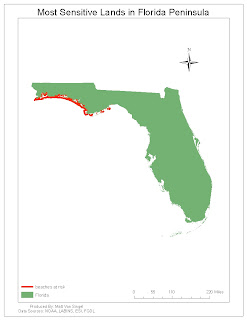A disaster of any magnitude can be a devastating event; however, GIS can help mitigate such events. In any, disaster the first task at hand is to understand the event that has occurred and in the case of a deep water oil spill the first step is no different. Using GIS can help show the location of an event and help orientate agencies to the disasters location. Communication is an immense aspect of disaster coordination and this is where GIS visualizations are invaluable. When speaking in terms of the deep water oil spill in the Gulf of Mexico, GIS has produced many maps and animations for many different audiences. For many, a map of the exact location of the oil rig where the event occurred was the starting visual aid. Once the location of this event was established GIS can then help further explain the dynamics of the situation.
GIS work is indispensable in today's world, especially in disaster relief coordination. Its ability to consolidate huge amounts of data into easy to understand visual aids allows for many agencies to work together to minimize the effects of these events. With the current oil spill, there are many agencies both state, federal and public that are working congruently to both stop and alleviate the effects of one of the worst disasters in history. Information needs to be portrayed regarding jurisdiction to the many agencies that will help with oil mitigation both on the open ocean and soon, all along the gulf coast. To do this, federal agencies such as FEMA, individual state agencies and public companies (BP) need personalized visual data to help them accomplish their goals. GIS accomplishes these goals by allowing for fast transfers of information in to customized maps and projections.
Perhaps greater prevention will come from this tragic event. Many agencies in current times are utilizing GIS to help plan and prevent for disasters. If a plan of action had been put in place for the oil rig to help better contain such an event there might have been a possibility that the wide spread environmental impact could have been reduced. Implementing boom locations, promoting interagency course of action plans to allow for faster response times and having access to other environmental data may have saved billions of dollars and hopefully one day such plans will be mandated accordingly.











